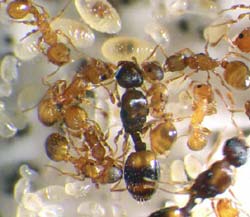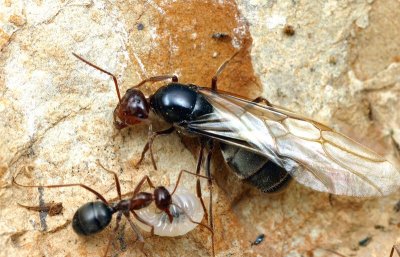Ant Slavers
Biology 342 Fall 2010
By Zina Jenny and Joseph Perry
Adaptive Value
Why would they do this?
|
Leptothorax minutissimus, a miniscule gold-colored ant measuring in at three millimeters, has taken it a step further. They have lost all vestiges of self-reliability, and exist only as parasites of their host colonies (usually very small spaces, on the inside of acorns or hollow grass). L. minutissimus queens will climb on top of their host queen and ride around, being fed by host workers and laying eggs of their own. If there is more than one L. minutissimus parasitic queen in a hive, the dominant (usually the largest) L. minutissimus is the one who gets to ride the host queen. | 
|
